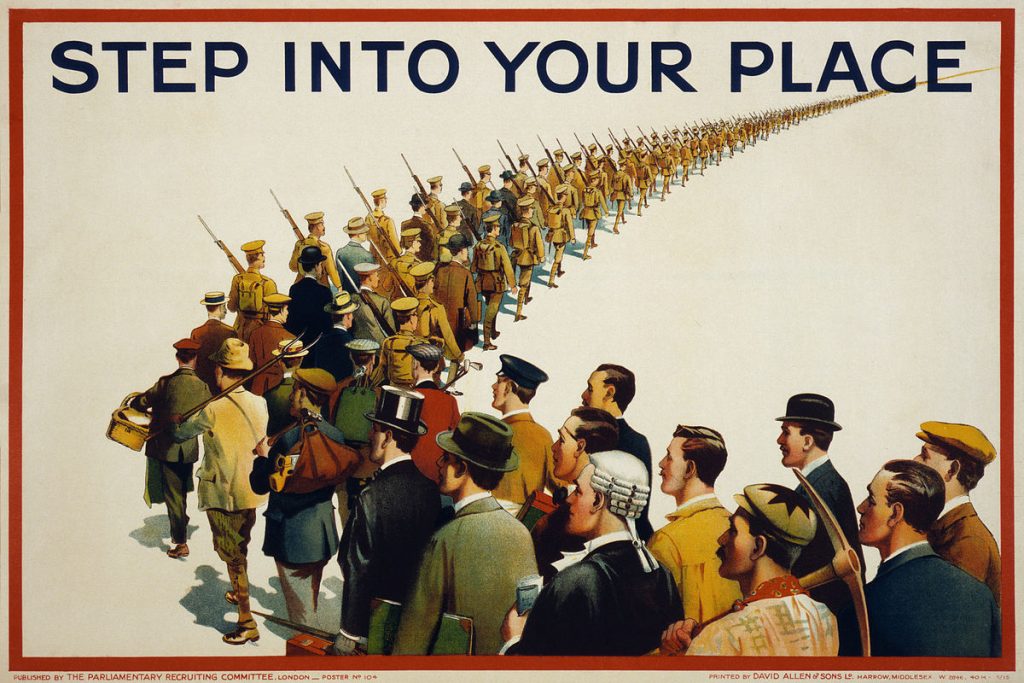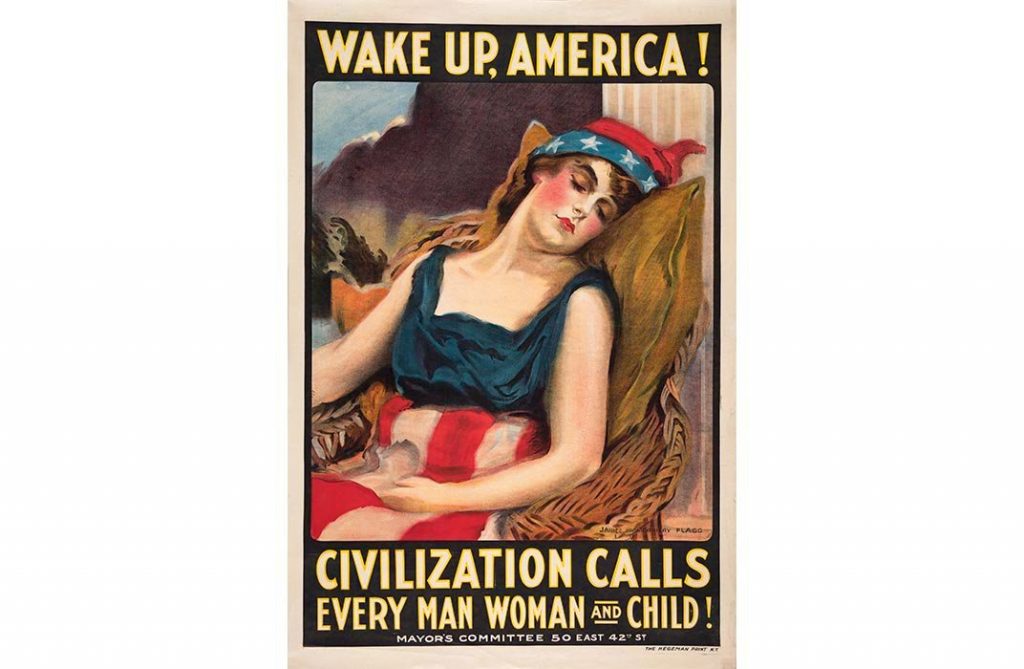What began as a way to recruit people to join the war led to the rise of an entire marketing scheme and propaganda campaign. Take a look into why these WW1 posters were so effective and the various ways in which they influenced people.
The Need for a New Tool of Communication
You have probably heard about WW1 countless times in History classes. You may even ask what’s the point of learning about it over and over again. However, we haven’t learned everything about it and there is so much we don’t know about the way the war transformed multiple aspects of life. Nothing was the same after WW1, including the field of graphic design. In fact, design transformed to a whole new level in the form of poster designs created during the war. During this time the tools of communication were limited so posters were the most effective way of getting messages across to the public. As we will see below, these posters focused mainly on recruitment for the army as well as outright propaganda.
Recipe for Success: What Made the Posters so Popular?

Image Source: https://commons.wikimedia.org/wiki/File:Step_into_your_place,_propaganda_poster,_1915.jpg
This poster was created in Britain and shows people from different aspects of society coming together to join the war. This poster is effective because it portrays joining the war as one’s duty to society. By emphasizing the concept of community and teamwork, especially with the phrase “Step into your place,” it tricks people into thinking that it is their responsibility as a member of society to join the war.

Image Source: https://time.com/4725856/uncle-sam-poster-history/
This is another WW1 poster that was very popular. It shows Uncle Sam pointing his finger directly at the viewer and telling them to join the war. This poster was very effective because Uncle Sam makes direct eye contact with the viewer and his finger seems to almost emerge out of the paper. It is a very bold call to action and perhaps that’s why it got so famous. It also uses the colours blue and red, which are very patriotic and stand out against the light colour of the background.

Image Source: https://www.smithsonianmag.com/history/posters-sold-world-war-i-american-public-180952179/
This is another popular poster, which like the previous one uses the colours blue and red, similar to the US flag. The US entered the war only after two years of waiting. Therefore, the woman sleeping is supposed to represent America finally waking up and joining the war. Again, this poster is so effective as it appeals to one’s sense of patriotism with the red stripes and the hat with the stars, which represents freedom.
The Dark Side: Manipulation and Guilt Trips
Although the posters were successful communication tools, they also manipulated people with their propaganda and were later used to spread harmful ideologies. They idealized the concept of war and guilt tripped people into joining it. For example, the poster below is a recruitment poster created in 1915.

Image Source: https://medium.com/@jonathansasitharan/political-semiotics-daddy-what-did-you-do-in-the-great-war-7f793c3c5399
The creator of this poster knew exactly who the audience was and specifically targeted fathers and their self perception. No one wants to be seen as a bad father who didn’t do anything when society needed them most. Therefore, by placing the kids in the picture, they tried to guilt trip the father into joining the war. However, I personally don’t think this is a good message to send. Kids would still love their parents even if they didn’t do anything heroic like joining the war. At the end of the day, I think it’s the relationship that the father has with their children that matters, not whether he joined the war or not. Moreover, everyone has their personal reasons for not joining the war so I think the posters should have leaned more towards informing people about the war while at the same time respecting people’s decision not to join it.
The other dark side to the posters, were that they often depicted the ‘enemies’ as bad people and tried to dehumanize them. It made people think that their country was the only one with good values and everyone else was out to get them. For example, the ‘Destroy the Mad Brute’ poster seen below is one example of it.

Image Source: https://www.ncpedia.org/media/destroy-mad-brute
This was an enlistment poster created by the US. The Gorilla here depicts Germany and the girl represents the American value of freedom. It depicts Germany as an aggressive non-human entity that has a terrible culture. This poster ended up being very harmful as many German Americans were persecuted as a result of how people viewed them.
Significance and Legacy
Despite all the harm the posters caused and the manipulative ideologies they promoted, they were still very effective posters that got the job done. They were able to appeal to their target audience and their goal of getting people to enlist in the war was successful. In fact, these posters were the start of a massive marketing campaign that continues to this day. We may not realize it, but everything we encounter in the streets everyday are a form of marketing. It’s clear that the posters created during WW1 had an influence on the way our current marketing strategies work and will continue to inspire the way messages are delivered to their audience.
Sources:
https://www.iwm.org.uk/learning/resources/first-world-war-recruitment-posters
https://www.designyourway.net/blog/graphic-design/ww1-posters/
https://time.com/4725856/uncle-sam-poster-history/
https://www.smithsonianmag.com/history/posters-sold-world-war-i-american-public-180952179/
https://www.magellantv.com/articles/the-psychology-of-propaganda-war-tool-turned-marketing-tactic
Leave a Reply